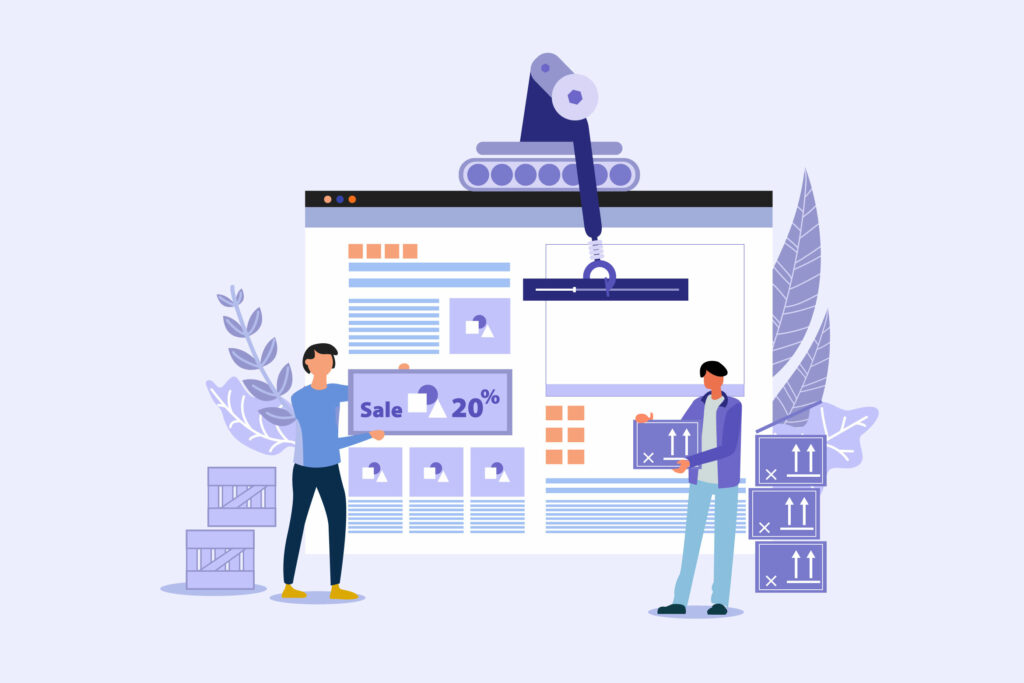Software development projects have grown enormously in conjunction with the exponential growth of technology. Even though technology now pushes the core operations of the majority of businesses, the days of IT projects being confined to the bounds of IT departments are completely gone.
Bespoke software development has become a vital part of running a successful and efficient organization. Many off-the-shelf solutions fail to handle mission-critical needs and other expectations placed on a contemporary business, and there is an increasing demand for customized software development services that are specifically intended to address mission-critical requirements and other demands placed on a contemporary organization.
If you’re considering developing your own app or other specialised software, we understand how intimidating the number of alternatives and factors to consider can be. That’s why we’ve put up this guide laying out the best course of action.
These are the top ten considerations when developing your own custom software.
1. Work out exactly what you Require and what exactly is the issue you’re attempting to resolve?
You may have the foundation of a wonderful concept, but you’ll need to think through every aspect. Working through what users will need to be able to perform (what we term ‘Use Cases’) can help you comprehend all of the functionalities the software will need to deliver.
Many organizations begin with a solution before fully understanding why they require it. It’s simple to say, “We need an app because our counterparts do,” or “We need an app since our competitors have one.” However, if your competitors developed theirs with a thorough description of the issues their users are facing and you don’t, your solution will struggle to compete. You may use compassion to innovate and create a product that places the user first if you take the time to understand the challenge your company is facing or the difficulty your users/customers are having. As a result, when it comes to app and software development, this question should be your first concern.
2. Get a clear picture of how to address the issues
After you’ve spent time understanding your users’ problems (whether they’re internal employees or potential customers), the next step in-app and software development is to figure out what kind of software you’ll need to address them and what features they’ll need.
There are numerous options to examine in this situation. Consider the following example:
- Examine the software of competitor firms to see if your concepts are on the right trajectory.
- Conducting user research to learn what your existing system’s users like and dislike about it, how they react to alternative products in the industry, and what features they’d like to see in your offering.
- Workshop with your team to have a deeper grasp of their perceptions of the target market and potential qualities that would appeal to them.
- Collaborating with an external partner that has the knowledge to guide you through all of the above and can make suggestions of their own.
Getting the results and reducing them down to the most helpful and essential will assist you in moving on to the next stage of the process.
3. Analyze the possibilities

After taking time on understanding the issue and researching the capabilities your new program will require to help you address it, you should analyze the possibilities or the options available to you.
You can choose from a variety of options, such as:
- In-house Development: Is your team equipped with the necessary resources and skills to complete the project? If that’s the case, keeping it in-house might be the best option.
- External Development: This provides the advantages of outside expertise as well as greater flexibility in resource scaling as the project proceeds.
If the external development option appeals to you, you have three alternatives on how to proceed:
- Off-Shore Development: Collaborating with a developer in a different country and time zone, can sometimes be more cost-effective than engaging with a local team.
- Onshore Development: Onshore development entails collaborating with a local firm that is more responsive due to the lack of a time difference.
- Nearshore Development: Nearshore development is a good balance between onshore and offshore development. Collaborating with a foreign developer in the same or a nearby time zone can provide some of the benefits of working offshore while maintaining the convenience of working locally.
4. What characteristics are the most crucial?
The next step is to decide on the structure of the features. The next step in our ten-step guide to customized software design is to decide on a feature hierarchy. This is beneficial since your software may not need to deploy with all of the features you selected earlier above. If delivering a product to market quickly is a priority, specifying the most important features first and setting a plan for adding the rest later can be a very effective technique.
At this point, you may wish to examine the following options:
4.1 Agile Development
By reducing the constraints of lengthy processes, this strategy allows developers and stakeholders to collaborate closely. It allows developers and clients to collaborate to generate software quickly, adapts quickly, and interactively explore features.
4.2 CI/CD
Developers that utilize a CI/CD method employ automation technologies to ramp up the integration of new code. CI/CD stands for Continuous Integration/Continuous Delivery. This helps them to keep track of work, test for security and compliance quickly, and provide feature-rich software in the relatively short time it takes with traditional methods, particularly when paired with an agile methodology.
5. Make a list of your Project’s Constrictions
This stage entails looking for ways to learn about all of the variables that your project software partner will have to consider. These could include the following:
- Your investments
- Your schedules
- Legacy systems and their interoperability
- Your target audience’s preferred technology
- Conferences, catch-ups, and continuous feedback are all dependent on your availability.
- Compatibility with existing systems
This is an important step if the software you’re developing is designed to meet an internal requirement.
6. What reports do you require?

The more information a company has about consumer data and product or service efficiency, the more effective it may improve its organization’s performance, marketing, or sales technique. As a result, reports are one of the most crucial aspects to consider while creating your own custom program. You would like to ensure that your software partner provides a reporting suite that is straightforward to use, outputs data in an easy format, and is flexible enough to allow you to operate the resulting data in any way you may want to, either now or in the future.
7. What are your Software’s Host and users will find it?
The type of solution you choose and how you intend to disseminate it will determine how you manage this. It may be hosted on a server or in the cloud, or if it’s an app, you can use one of the many app stores available, such as Apple’s, Google’s, or Microsoft’s.
With considerable experience in Cloud-based services and deploying to all major app stores, TechDel is ideally positioned to assist you in making this decision and putting it into action.
8. Planning to Go for Live

Keep in mind how we said we’d start with a few features and introduce more as time goes on? That’s only one method for getting your product out to the public. You may either do a limited release by targeting select user groups or go all-in with a fully functional software or program right away. We’d also consider moving
data, retraining your users, and how you’ll want to interact with your consumers about the product’s arrival on the market at this point.
9. CONCLUSION
Overall, bespoke software provides full product ownership and scalability, increased agility, adaptability, and cost-effectiveness, as well as a higher return on investment.
At TechDel, we have a great deal of experience developing bespoke software to solve a wide variety of issues for companies of all sizes and maintaining the maintenance of that software all over successful long-term collaborations. Our services are designed to assist you in planning, developing, launching, and evolving the best bespoke software possible.
We reckon of every specific, and perform quickly and effectively, using a tried and tested agile approach, from early UX seminars where we look at the usability features your app needs involve, to hosting your software and getting it on to distribution networks like the numerous app stores, to developing additional characteristics post-launch.


